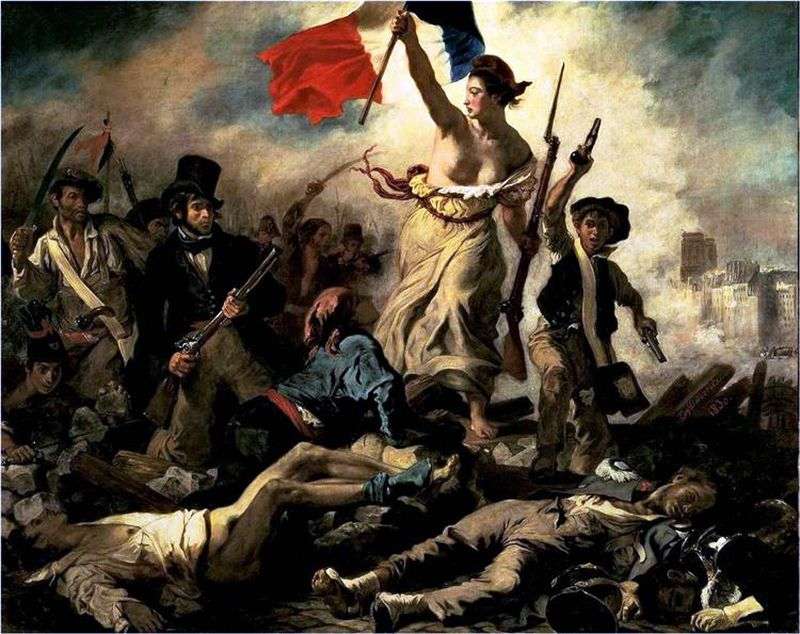
The struggle for freedom and independence of France devoted to perhaps the most famous work of the head of the French romantic school of painting by Eugène Delacroix “Liberty on the Barricades”, created under the influence of the revolution in Paris in July 1830.
Faced with the task of image abstract notion of “freedom”, the artist used the allegory. Born in stormy revolutionary times the dream of freedom, bearing in life changes embodied in the half-naked women. In her appearance visible features samples of ancient art: facial proportions correspond to the canons of beauty, which is subordinate to Greek sculpture.
But this modern Venus lost detachment of Greek prototypes and became the embodiment of the ideals of the new age. Loose clothes, fluttering in the wind, and reporting its image and picture of the dynamics characteristic of Romanticism, complemented by the hood of the Jacobins , a gun, a bayonet and a banner.
The heroine is central to the canvas, although initially Delacroix was not going to portray it as an allegory, and would restrict the death of a beautiful romantic hero of the barricades. She urges to go forward, even if the path is blocked by lifeless bodies of those who have given their lives in the struggle.
People, most of them students, took to the streets to seek the abolition of a number of government restrictions. The artist wrote and himself among the rebels. Too realistic image of the victim, placed in the foreground of the picture, is accused of the artist as a shocking and shocking the audience.
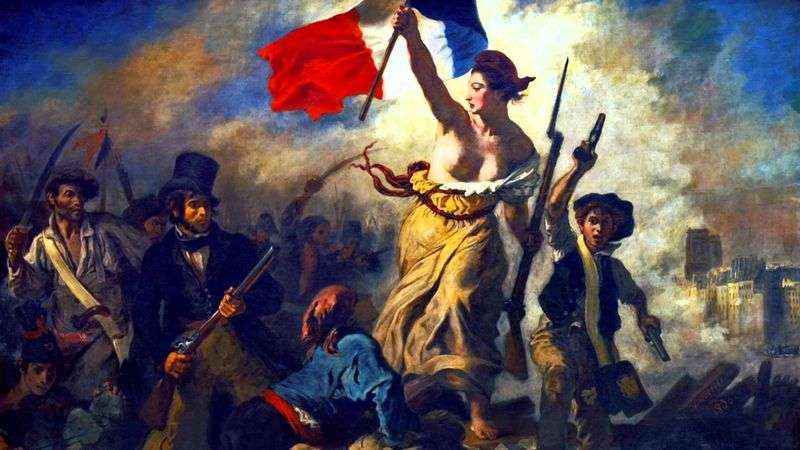 Freedom, the Leading People (Freedom on the Barricades) by Eugene Delacroix
Freedom, the Leading People (Freedom on the Barricades) by Eugene Delacroix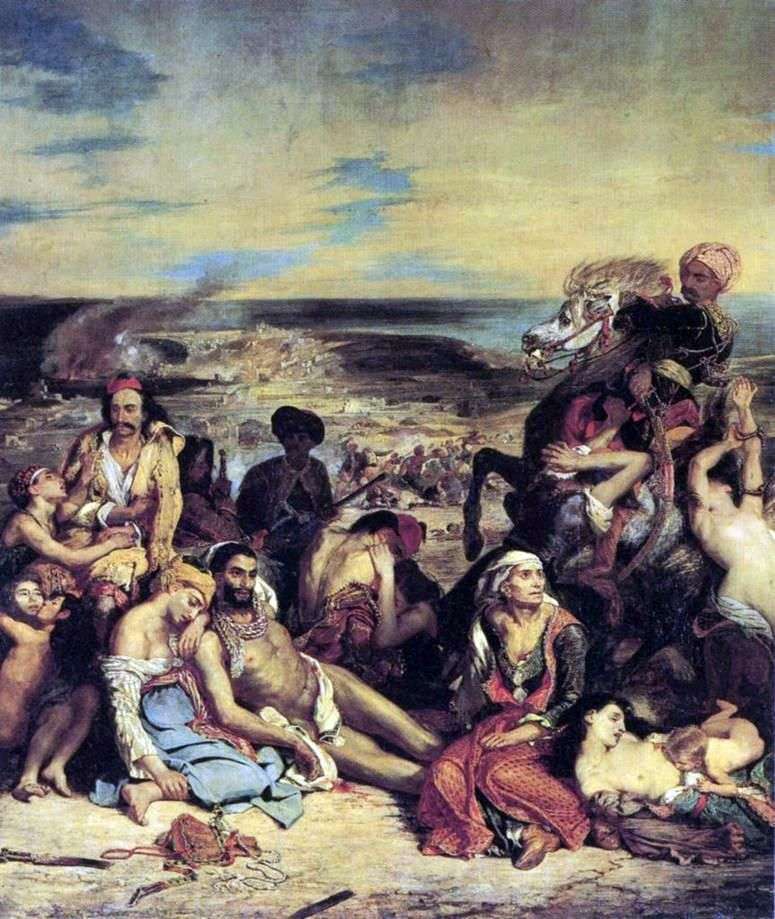 Massacre on Chios by Eugene Delacroix
Massacre on Chios by Eugene Delacroix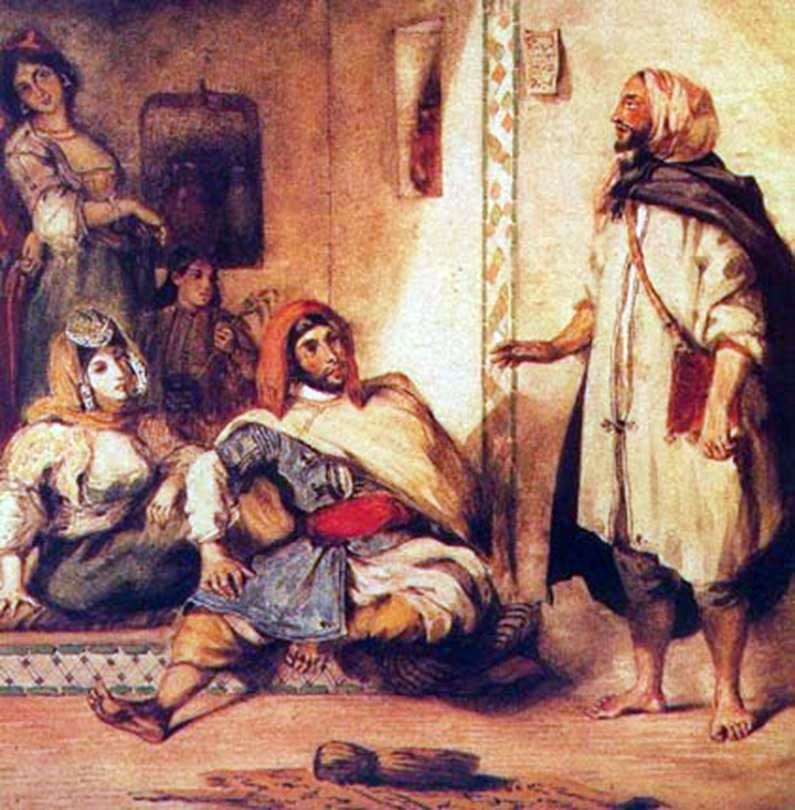 Moroccan family by Eugene Delacroix
Moroccan family by Eugene Delacroix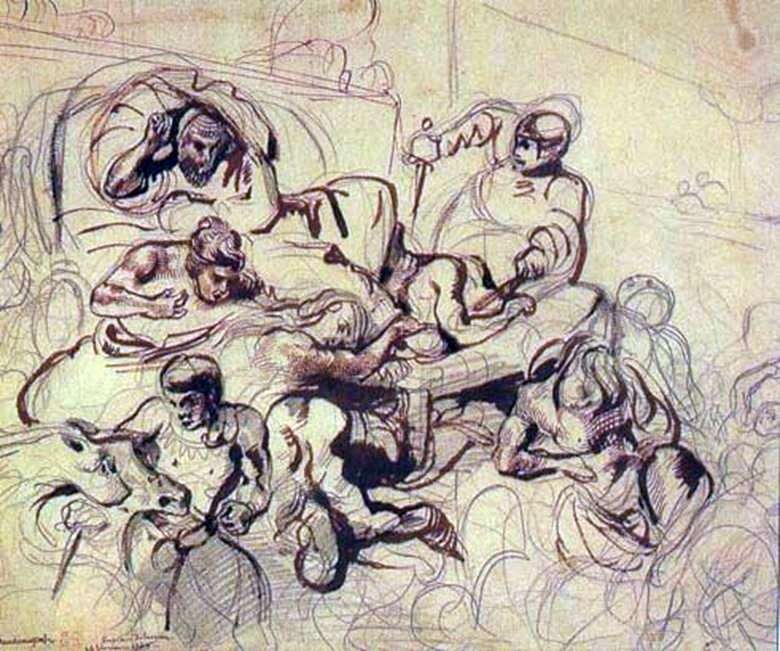 Sketch for the painting Death of Sardanapal by Eugene Delacroix
Sketch for the painting Death of Sardanapal by Eugene Delacroix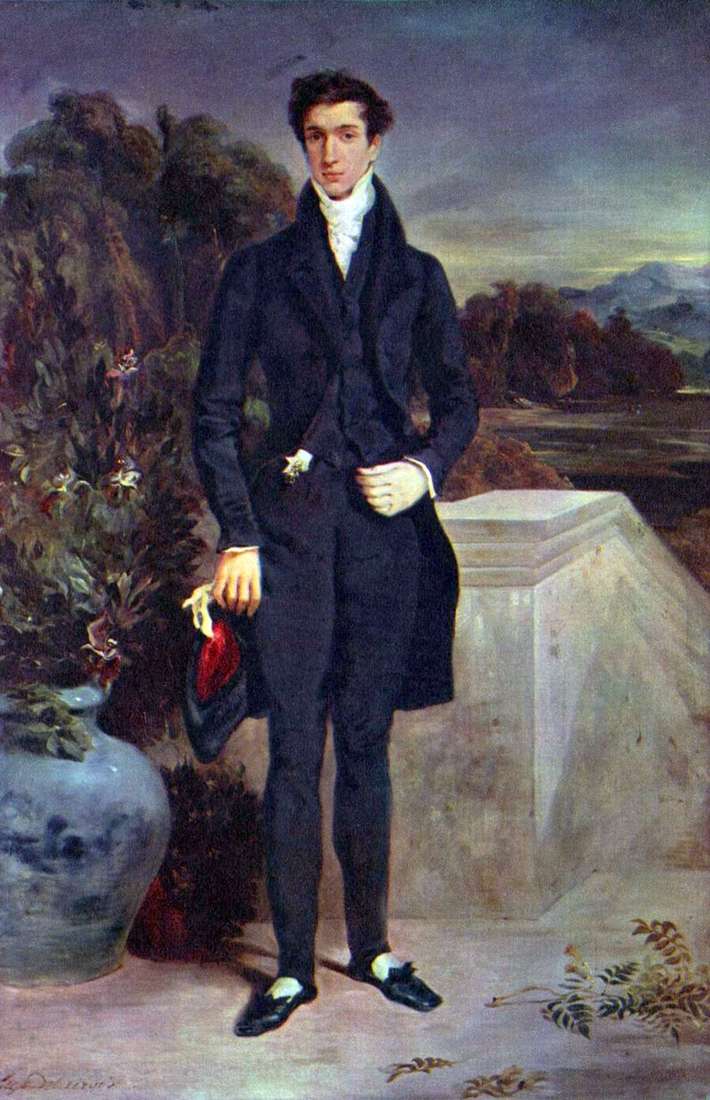 Portrait of Baron Schweiter by Eugene Delacroix
Portrait of Baron Schweiter by Eugene Delacroix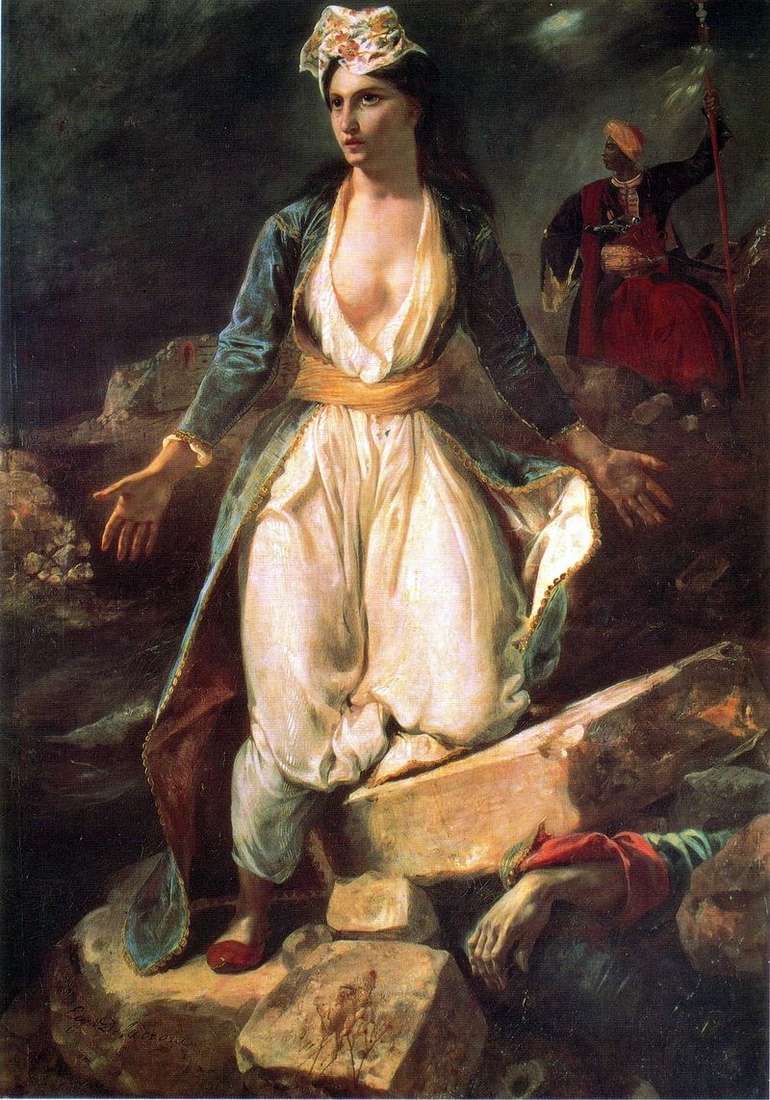 Greece on the ruins of Missolunga by Eugene Delacroix
Greece on the ruins of Missolunga by Eugene Delacroix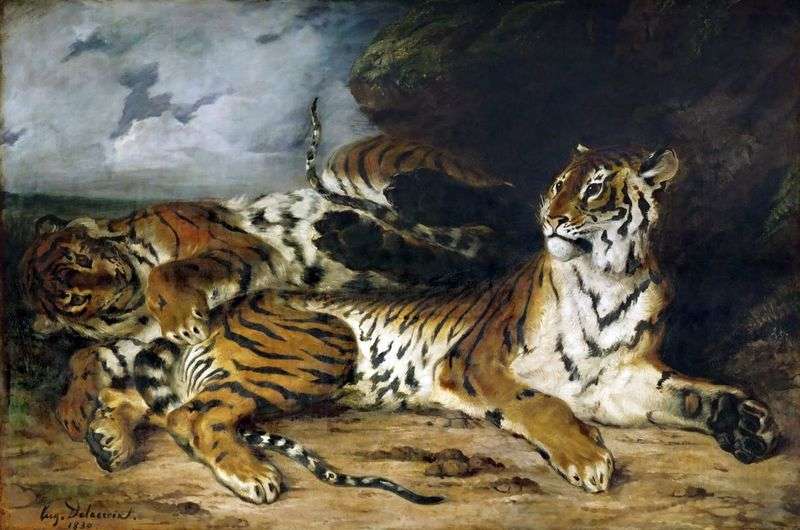 A tiger playing with his mother by Eugene Delacroix
A tiger playing with his mother by Eugene Delacroix Women of Algiers by Eugene Delacroix
Women of Algiers by Eugene Delacroix